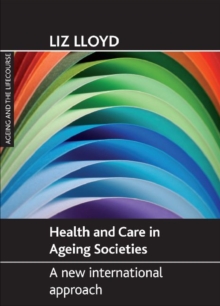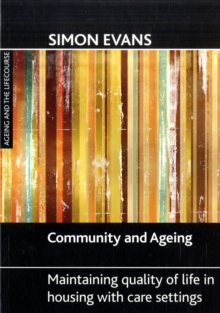
Ageing in urban neighbourhoods : Place attachment and social exclusion Paperback / softback
by Allison E. Smith
Part of the Ageing and the Lifecourse Series series
Paperback / softback
Description
Many western nations have experienced a rise in the number of marginalised and deprived inner-city neighbourhoods.
Despite a plethora of research focused on these areas, there remain few studies that have sought to capture the 'optimality' of ageing in place in such places.
In particular, little is known about why some older people desire to age in place despite multiple risks in their neighbourhood and why others reject ageing in place.
Given the growth in both the ageing of the population and policy interest in the cohesion and sustainability of neighbourhoods there is an urgent need to better understand the experience of ageing in marginalised locations. This book aims to address the shortfall in knowledge regarding older people's attachment to deprived neighbourhoods and in so doing progress what critics have referred to as the languishing state of environmental gerontology.
The author examines new cross-national research with older people in deprived urban neighbourhoods and suggests a rethinking and refocusing of the older person's relationship with place.
Impact on policy and future research are also discussed. This book will be relevant to academics, students, architects, city planners and policy makers with an interest in environmental gerontology, social exclusion, urban sustainability and design of the built environment.
Information
-
Available to Order - This title is available to order, with delivery expected within 2 weeks
- Format:Paperback / softback
- Pages:248 pages
- Publisher:Policy Press
- Publication Date:02/09/2009
- Category:
- ISBN:9781847422705
Other Formats
- Hardback from £79.99
- PDF from £26.34
Information
-
Available to Order - This title is available to order, with delivery expected within 2 weeks
- Format:Paperback / softback
- Pages:248 pages
- Publisher:Policy Press
- Publication Date:02/09/2009
- Category:
- ISBN:9781847422705










